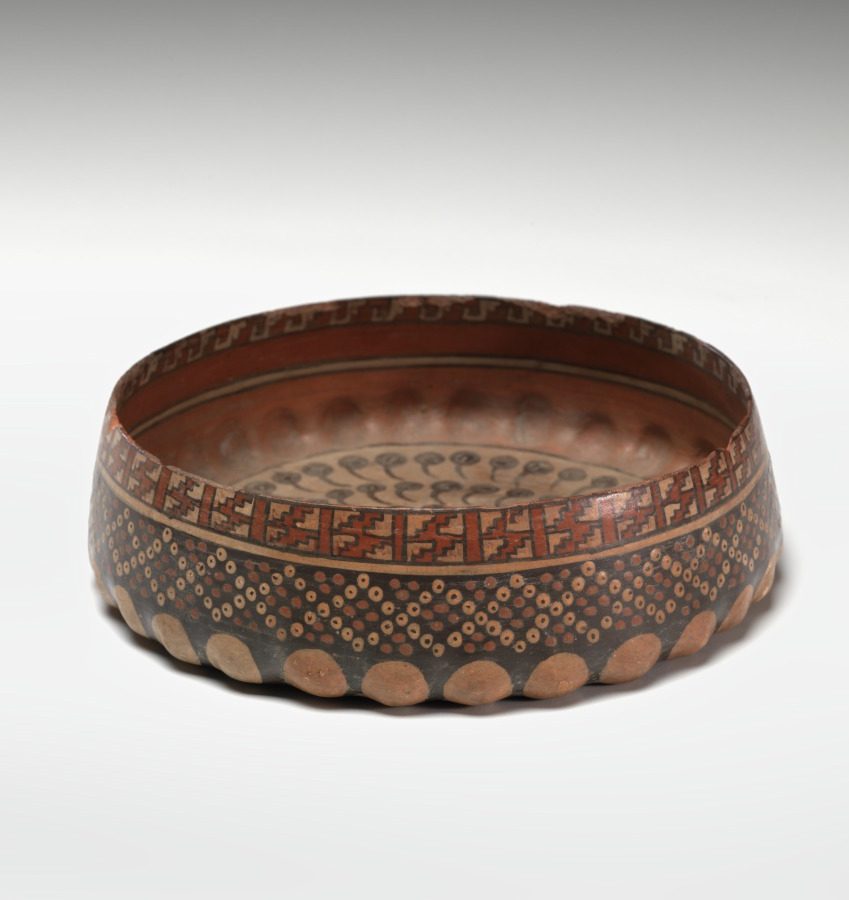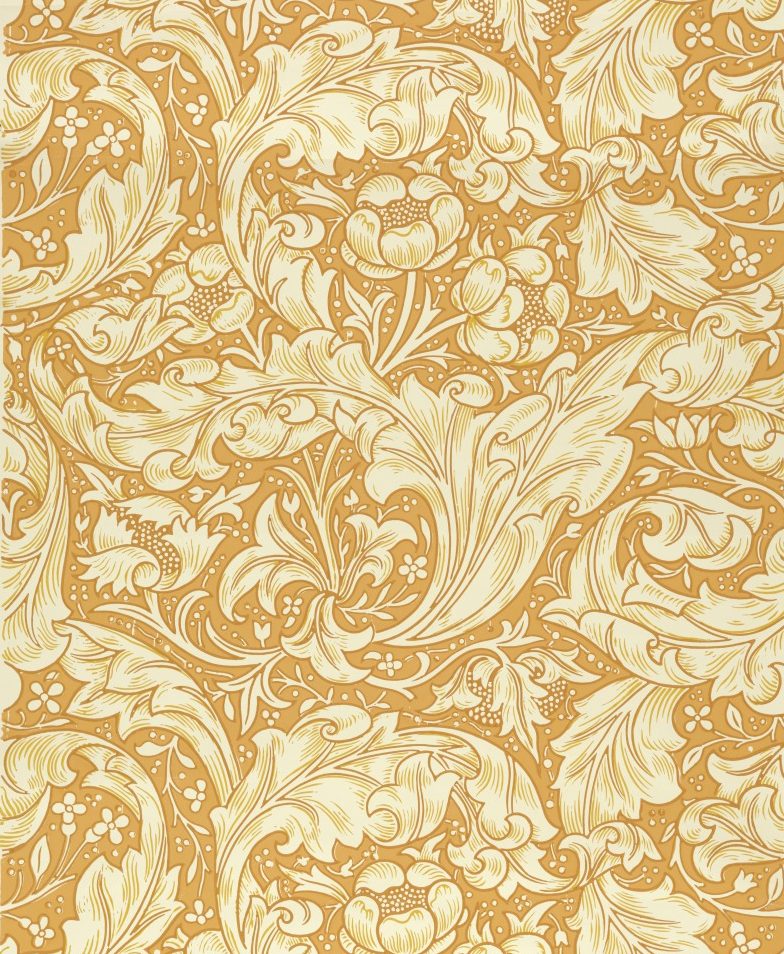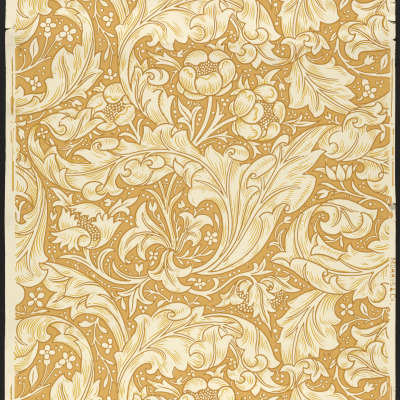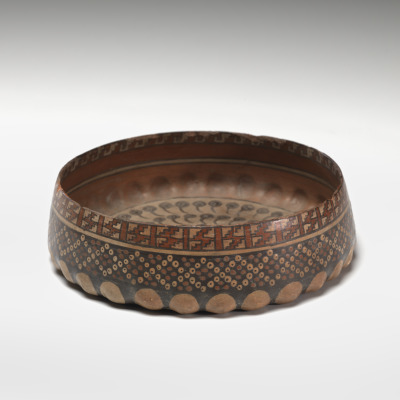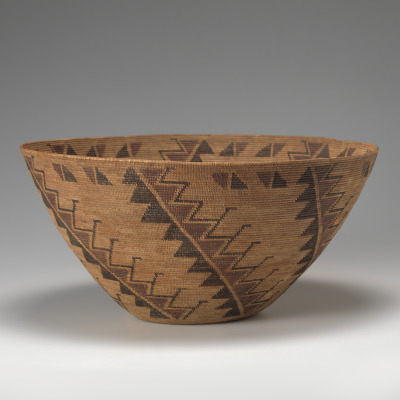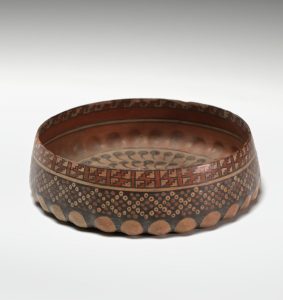
Explore and Create Your Own Expressive Pattern
Cultures all over the world create decorative patterns, perhaps inspired by the enduring patterns humans see in the natural world that surrounds us, from the cycle of the seasons to the pattern of the stars in the heavens. These hands-on activities, which can be adapted for a number of grade and ability levels, introduce repeating and alternating patterns, as well as the concept of a visual motif.
Looking for Pattern
A repeated decorative design is called a pattern. Examine this ceramic (or terracotta) bowl made by an artisan of the Ica culture in South America between 1300 and 1450. Can you identify three or four different patterns that were used to decorate this clay bowl? Try drawing them in your idea notebook or sketchbook.
Can you compare and contrast the patterns? How are they alike? How are they different?
Notice how some of the patterns were made by just repeating one shape—like the pattern on the bottom band of the bowl.
Try creating your own shape in your sketchbook. Repeat that shape several times across your page to make a repeating pattern.
Next, look carefully at the upper band at the top of the bowl. Can you find two shapes that were used to create this pattern?
In your sketchbook, make a second shape that’s different from the shape you used for your repeating pattern. Make another pattern by drawing your first shape and then your second shape. Keep repeating the two shapes in order across your paper.
You’ve made what is called an alternating pattern!
Motifs
Many patterns are created using straight lines and angles, but organic shapes like those found in plants can also create patterns. This complex pattern was created by the English artist William Morris.
Morris was inspired by flowers and leaves to make this design for a roll of wallpaper. We can only see part of the pattern in this detail, but can you find two areas where the same representation of a flower is shown? When a pattern—like the flowers and leaves seen here—is repeated throughout a work of art, the repeated element is called a motif.
Morris has used lots of curving lines to make this organic pattern? Can you find a shape in nature (perhaps a flower, a leaf, or a piece of fruit) that you could use to create a pattern? Try making simplified line drawing of your shape. Repeat it, flip it, and repeat the process to make your own wallpaper pattern with your chosen flower, leaf, or fruit as a motif! Does your motif have a personal meaning for you?
Pattern in Motion
Some patterns that decorate objects can also suggest motion. Compare and contrast the two baskets pictured below. Which design do you think best suggests motion? Does one suggest upward motion better? Which one makes you think more about horizontal motion?
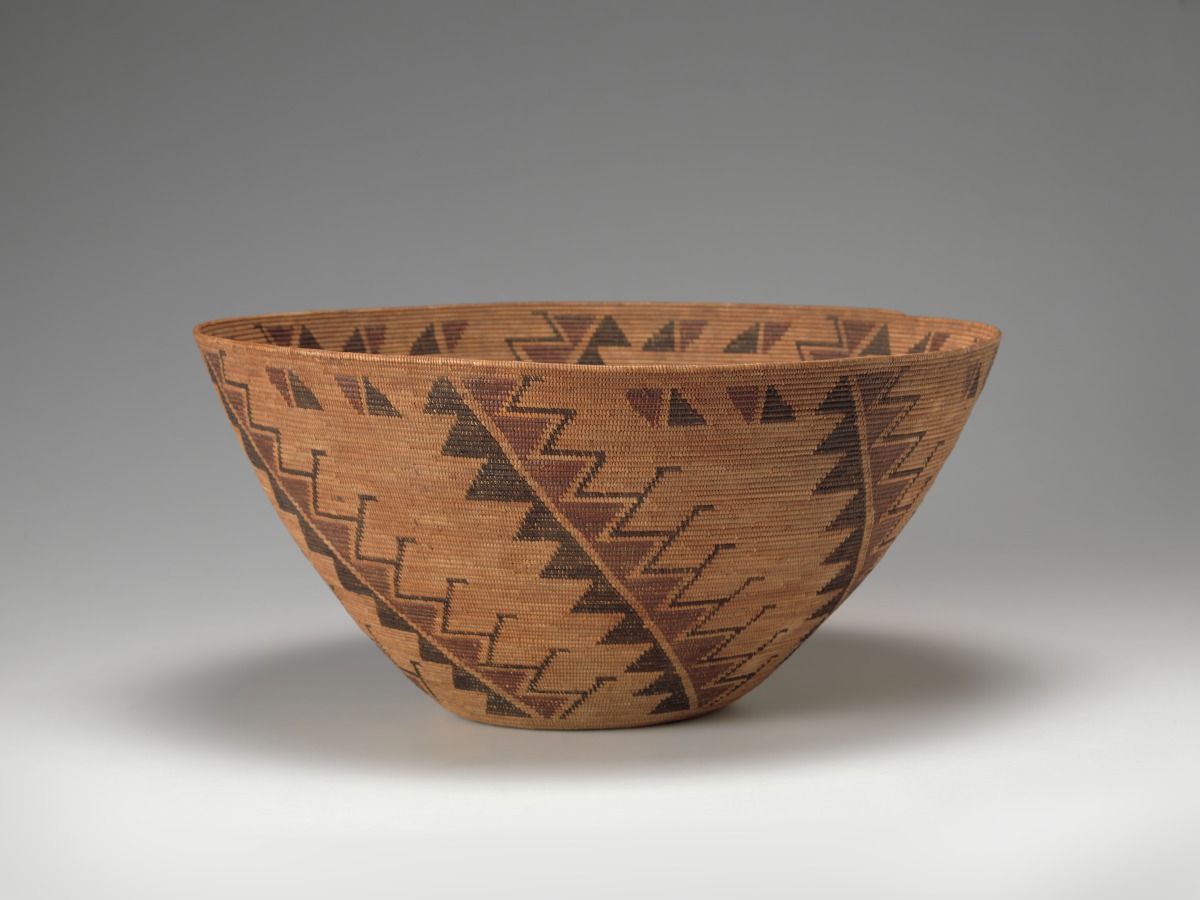
Unknown (Yokuts), Native American, Basket, 1870–1920, Grasses, sedge root, bracken root, redbud, From the Robert and Nancy Nooter Collection, Arthur and Margaret Glasgow Endowment, 2015.10
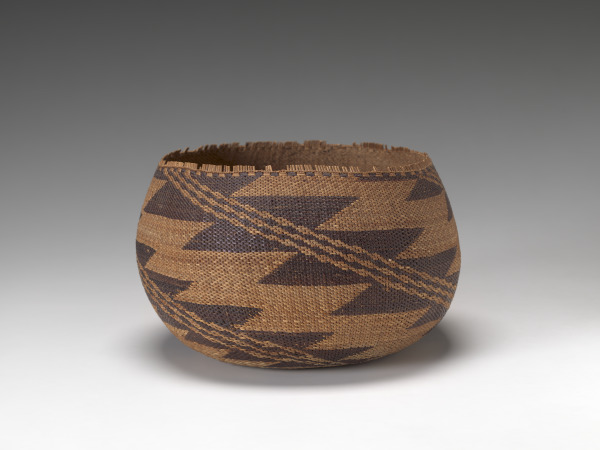
Unknown (Pomo culture, California), Native American, Storage Basket, 1900, Willow, sedge root, redbud, From the Robert and Nancy Nooter Collection. Arthur and Margaret Glasgow Endowment, 2017.57
Can you sketch out some ideas for patterns that might suggest motion? Experiment with different angles for your shapes. Do you notice how the shapes on these baskets create interesting diagonal patterns across the surface of the baskets? Try making diagonal patterns on your paper on your paper. How do these patterns differ from the ones that are placed in a straight line?
Go to the VMFA website to see one of the baskets rotate so that you may see the entire pattern!
Once you have explored all of these different ideas about patterns in your sketchbook, put your discoveries together to create a finished work of art that features patterns!
This VMFA Art-Making Adventure relates to the following Virginia SOLs:
2013 Visual Arts standards: K.7, K.16, 1.7, 2.5, 3.7, 4.5
2020 Proposed Visual Arts standards: K.3, K.12, 1.12, 2.12, 3.12, 4.12
2016 Mathematics standard: K.13, 2.16, 3.16, 4.15
